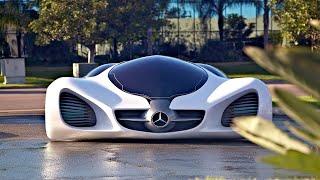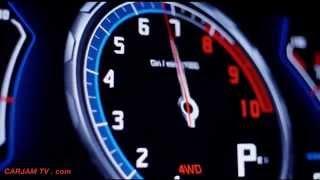BUGATTI CHIRON SUPER SPORT #shorts
The Bugatti Chiron is a mid-engine two-seater sports car designed and developed in Germany by Bugatti Engineering GmbH and manufactured in Molsheim, France by French automobile manufacturer Bugatti Automobiles S.A.S. The successor to the Bugatti Veyron, the Chiron was first shown at the Geneva Motor Show on 1 March 2016. The car is based on the Bugatti Vision Gran Turismo concept car.
The car is named after the Monégasque driver Louis Chiron. The car shares the name with the 1999 Bugatti 18/3 Chiron concept car.
Specifications and performance
The main carry over component from the Veyron is the 7,993 cc (8.0 L) quad-turbocharged W16 engine, though it is heavily updated. The engine in the Chiron has a peak power output of 1,103 kW (1,479 hp; 1,500 PS) at 6,700 rpm and 1,600 N⋅m (1,180 lb⋅ft) of torque starting from 2,000 to 6,000 rpm. The engine in the most powerful variant of its predecessor, the Veyron Super Sport generates 221 kW (296 hp; 300 PS) less than the new Chiron, while the engine in the original Veyron generates 367 kW (492 hp; 499 PS) less power.
Like its predecessor, the Veyron, the Chiron utilises a carbon fibre body structure, independent suspension and a Haldex All-wheel drive system. The carbon fibre body has a stiffness of 50,000 Nm per degree.
The Chiron can accelerate from 0–100 km/h (0–62 mph) in 2.4 seconds according to the manufacturer, 0–200 km/h (0–124 mph) in 6.5 seconds and 0–300 km/h (0–186 mph) in 13.6 seconds. In a world-record-setting test at the time in 2017, the Chiron reached 400 km/h (249 mph) in 32.6 seconds, after which it needed 9.4 seconds to brake to standstill.
The Chiron's top speed is electronically limited to 420 km/h (261 mph), or 375–380 km/h (233–236 mph) without the specific key, for safety reasons, mainly arising from the tyres as Bugatti concluded that no tyre currently manufactured would be able to handle the stress at the top speed the Chiron is capable of achieving. Independent testing by an owner has indicated that the Chiron can easily attain its limited top speed. Mixed fuel consumption is 22.5 L/100 km (12.55 mpg‑imp; 10.45 mpg‑US).
Chiron Super Sport (2022)
The standard version of the 300+ world record car. Unlike the 300+, it does not come with interior stiffening and has more leather in the interior like a typical Bugatti Chiron. More visual differences include special redesigned wheels and a paint finish instead of the bare carbon fibre seen in the 300+. The Chiron Super Sport will have the same power output as the 300+ but will be limited to 440 km/h (273 mph). It also has the capability to accelerate from 0-200 km/h in 5.8 seconds and from 0-300km/h in 12.1 seconds. Unlike the 300+, the limiter cannot be disabled by Bugatti in the Super Sport for prepared runs. Production will start in early 2022. This is the next generation supercar of the Bugatti Super Sport series present in Veyron and EB110 series cars. #SHORTS
The Bugatti Chiron is a mid-engine two-seater sports car designed and developed in Germany by Bugatti Engineering GmbH and manufactured in Molsheim, France by French automobile manufacturer Bugatti Automobiles S.A.S. The successor to the Bugatti Veyron, the Chiron was first shown at the Geneva Motor Show on 1 March 2016. The car is based on the Bugatti Vision Gran Turismo concept car.
The car is named after the Monégasque driver Louis Chiron. The car shares the name with the 1999 Bugatti 18/3 Chiron concept car.
Specifications and performance
The main carry over component from the Veyron is the 7,993 cc (8.0 L) quad-turbocharged W16 engine, though it is heavily updated. The engine in the Chiron has a peak power output of 1,103 kW (1,479 hp; 1,500 PS) at 6,700 rpm and 1,600 N⋅m (1,180 lb⋅ft) of torque starting from 2,000 to 6,000 rpm. The engine in the most powerful variant of its predecessor, the Veyron Super Sport generates 221 kW (296 hp; 300 PS) less than the new Chiron, while the engine in the original Veyron generates 367 kW (492 hp; 499 PS) less power.
Like its predecessor, the Veyron, the Chiron utilises a carbon fibre body structure, independent suspension and a Haldex All-wheel drive system. The carbon fibre body has a stiffness of 50,000 Nm per degree.
The Chiron can accelerate from 0–100 km/h (0–62 mph) in 2.4 seconds according to the manufacturer, 0–200 km/h (0–124 mph) in 6.5 seconds and 0–300 km/h (0–186 mph) in 13.6 seconds. In a world-record-setting test at the time in 2017, the Chiron reached 400 km/h (249 mph) in 32.6 seconds, after which it needed 9.4 seconds to brake to standstill.
The Chiron's top speed is electronically limited to 420 km/h (261 mph), or 375–380 km/h (233–236 mph) without the specific key, for safety reasons, mainly arising from the tyres as Bugatti concluded that no tyre currently manufactured would be able to handle the stress at the top speed the Chiron is capable of achieving. Independent testing by an owner has indicated that the Chiron can easily attain its limited top speed. Mixed fuel consumption is 22.5 L/100 km (12.55 mpg‑imp; 10.45 mpg‑US).
Chiron Super Sport (2022)
The standard version of the 300+ world record car. Unlike the 300+, it does not come with interior stiffening and has more leather in the interior like a typical Bugatti Chiron. More visual differences include special redesigned wheels and a paint finish instead of the bare carbon fibre seen in the 300+. The Chiron Super Sport will have the same power output as the 300+ but will be limited to 440 km/h (273 mph). It also has the capability to accelerate from 0-200 km/h in 5.8 seconds and from 0-300km/h in 12.1 seconds. Unlike the 300+, the limiter cannot be disabled by Bugatti in the Super Sport for prepared runs. Production will start in early 2022. This is the next generation supercar of the Bugatti Super Sport series present in Veyron and EB110 series cars. #SHORTS
- Category
- Autos & Vehicles













Comments